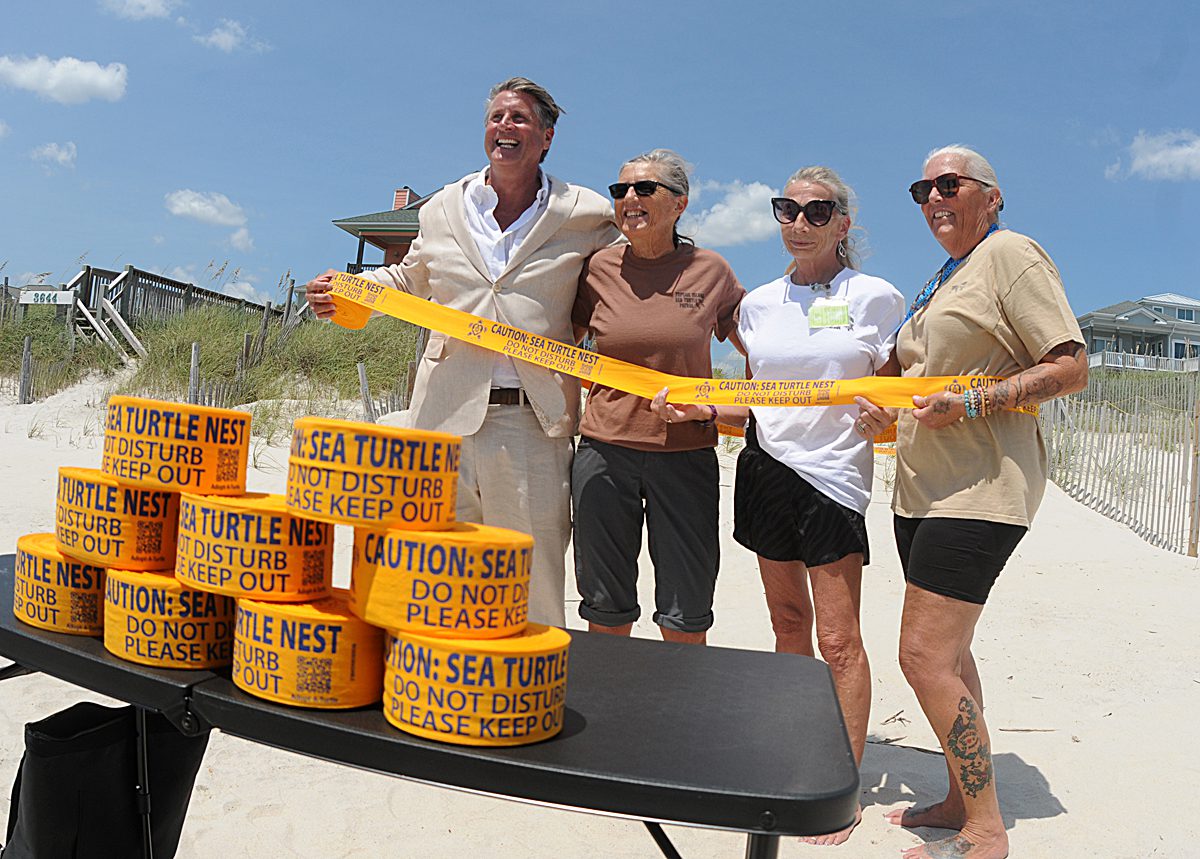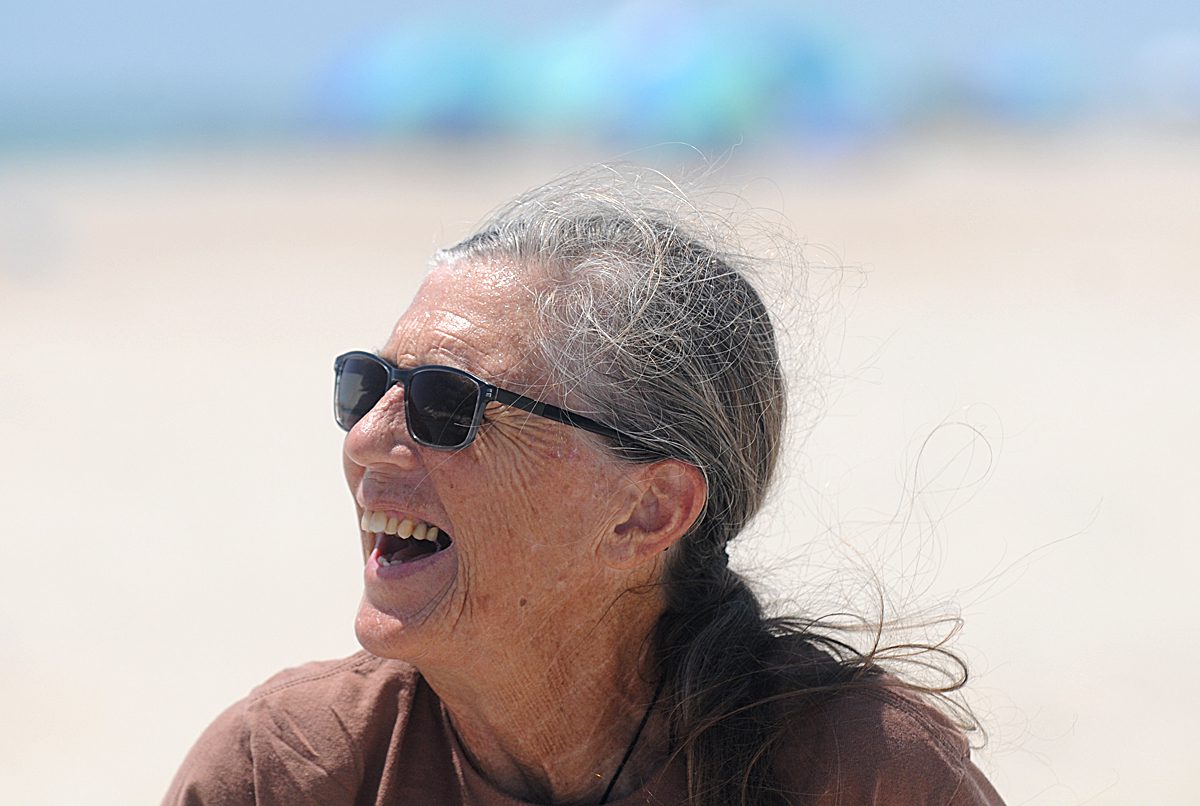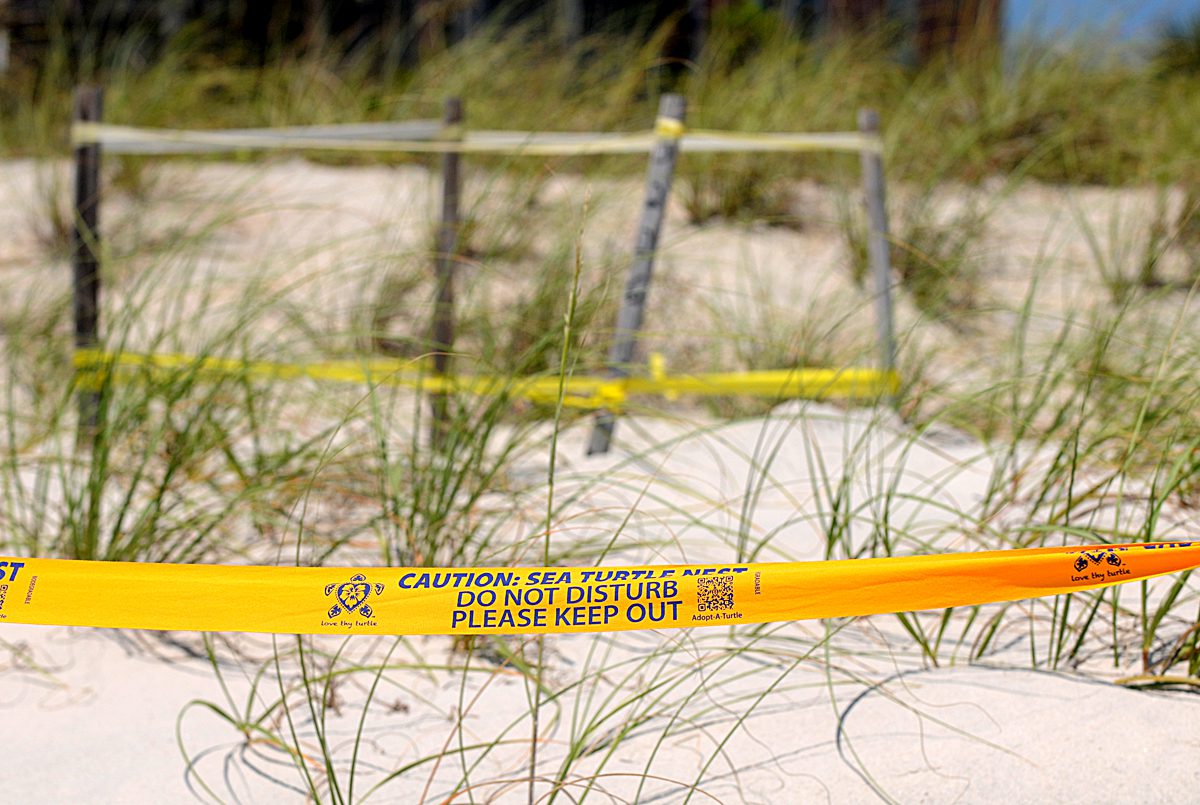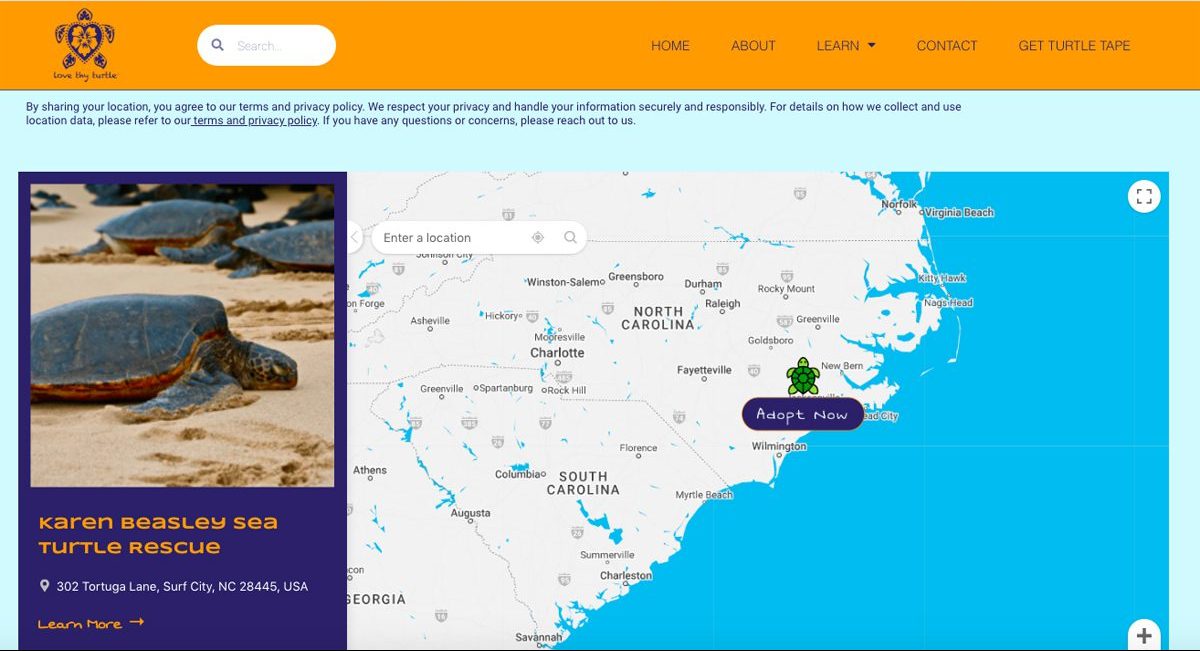
NORTH TOPSAIL BEACH — A new type of barrier tape used to mark off turtle nests was unveiled in North Topsail Beach Wednesday, one that does more than simply cordon off an area.
The tape is made of a biodegradable material to keep plastics off our beaches, and it is a way to learn more about the creatures it protects.
Supporter Spotlight
Keith Dorman, founder and managing director of Love thy turtle, was on hand for the midday unveiling at Access No. 29 off Island Drive. To say Dorman is passionate about sea turtles may be an understatement. He flew into coastal North Carolina from South Florida for the event. The crew at Love thy turtle say they are dedicated to the protection and conservation of sea turtles and their habitats.
“I must confess, I love sea turtles,” Dorman said with a beaming grin during the press event held in conjunction with the unveiling.

Dorman and his team developed the eco-friendly turtle nest marker tape that features a QR code that allows anyone on the beach to scan it with their smartphone for access to more information about the nest in front of them and the organization working to protect it.
Scanning the code will take them to the sea turtle rescue organization in that area, in this case, the Karen Beasley Sea Turtle Rescue and Rehabilitation Center in Topsail Beach. Beachgoers can “adopt” sea turtles and make donations with all proceeds going to the Beasley Center from their website.
Terry Meyer, deputy and conservation director at the Karen Beasley Sea Turtle Rescue and Rehabilitation Center, said that Love thy turtle initially provided six rolls of the marker tape free of charge. So far, the first tape marking active sea turtle nests has been up for six months and shows no signs of degradation.
Supporter Spotlight

The Beasley Center received additional tape Wednesday to get them through the rest of the 2023 nesting season, also free of charge.
Meyer noted the tape is reusable. “We can just roll it up after use,” she said. “It is not a hazard in the ocean if washes away.”
And the QR code allows the crew at the center to concentrate on saving turtles, rather than answering the phone.
“People can now get information with a smartphone instead of having to call us,” Meyer said. “They are able to get information on local sea turtles directly on the beach and specific local information on our center.”

Meyer said she was impressed on Dorman’s zeal to get information about sea turtles to the public.
The tape is intended to draw awareness and educate, Dorman said.
Dorman spoke about a turtle in the Loggerhead Marine Life Center, a nonprofit West Palm Beach, Florida, sea turtle rescue organization. The turtle had passed about 20 pieces of plastic during its first 24 hours there.
“I have to do something,” he said, visibly moved by the experience. “I wanted to create the tape with the QR code so that people can adopt the turtle and find out all the facts, and it becomes an information hub.”
It’s also a way for people to support the organizations that work to save sea turtles.

“The QR code scanning takes people to the Love thy turtle map site, and on that page there is an icon that will take them to the nearest adoption center website,” Dorman. “We don’t touch any of the money, it goes directly to the local center.”
As the group explained, female sea turtles have for millions of years returned to the beaches where they were hatched to make their nests and lay their eggs. Officials estimate only one in 1,000 hatchlings will survive to adulthood. That’s why Dorman and Meyer say it is vital that nests are protected to help improve the odds.
Over the last decade or so, the sea turtle population has declined by over 80%, Dorman said. He explained that in South Florida, they also mark sea turtle nests with yellow tape, but it was not enough protection.
“I was on the beach, and I heard a kid ask his mother, ‘Mommy, why are there so many dead bodies on this beach?’” Dorman said. “So I said, we really need to figure out a better way of letting people know what’s going on.”








